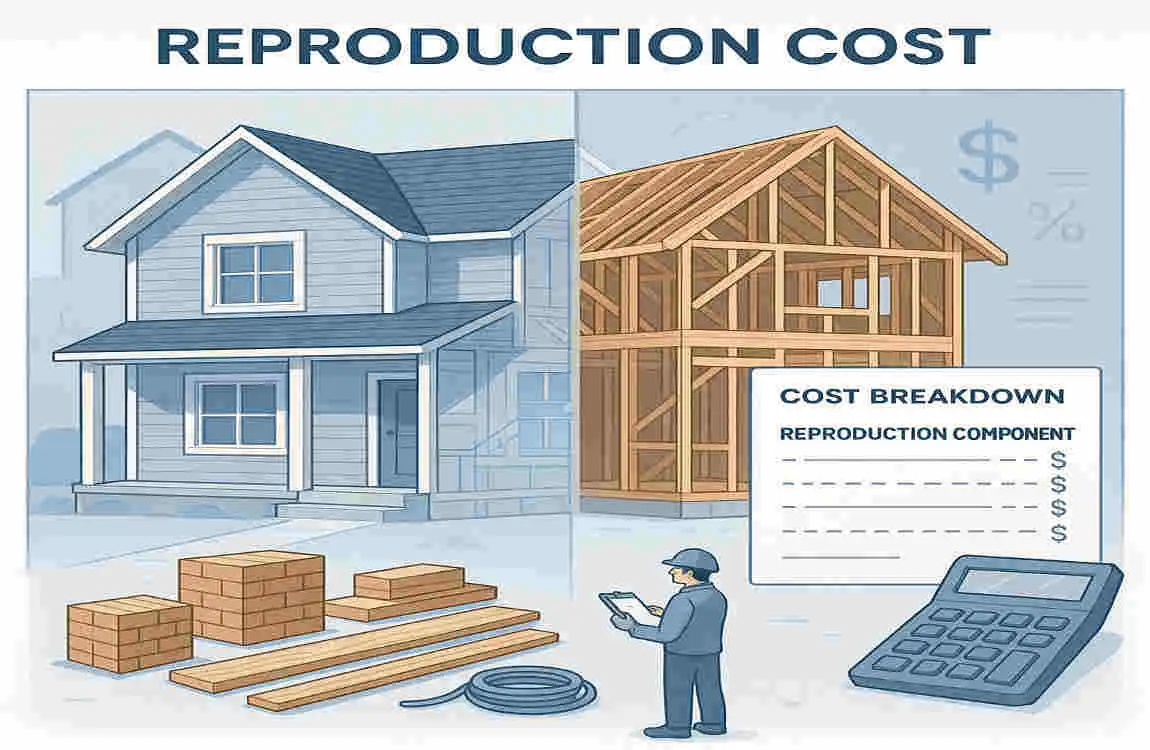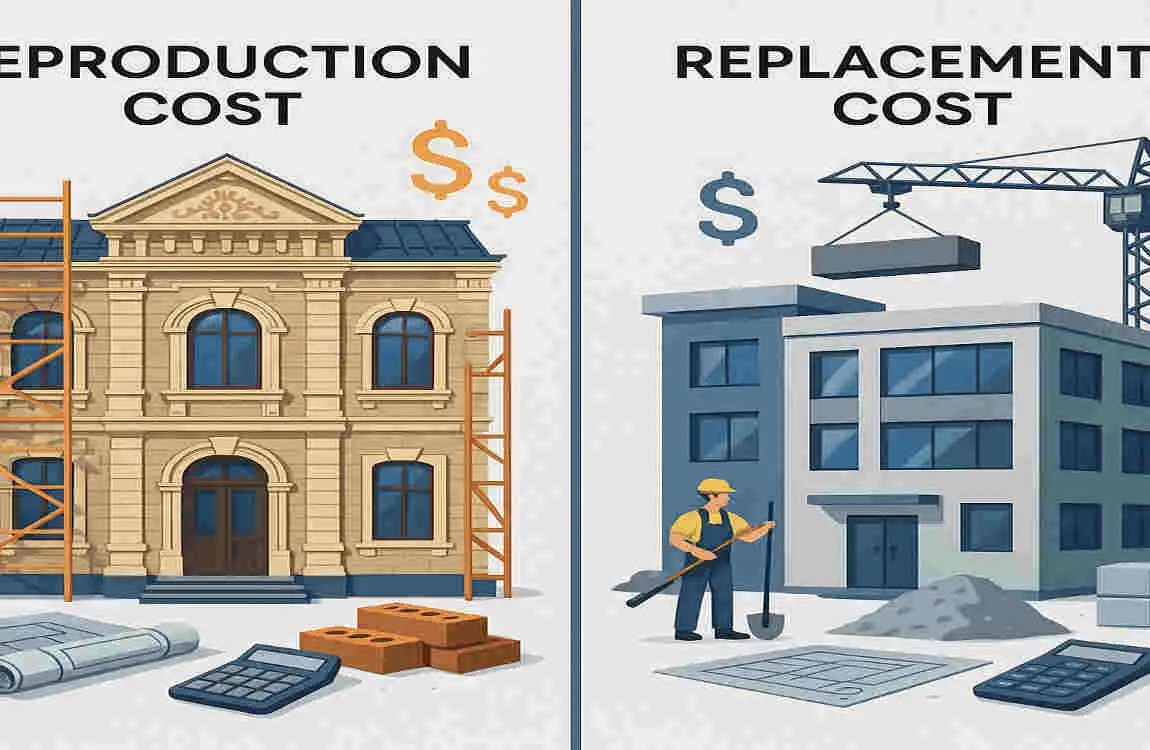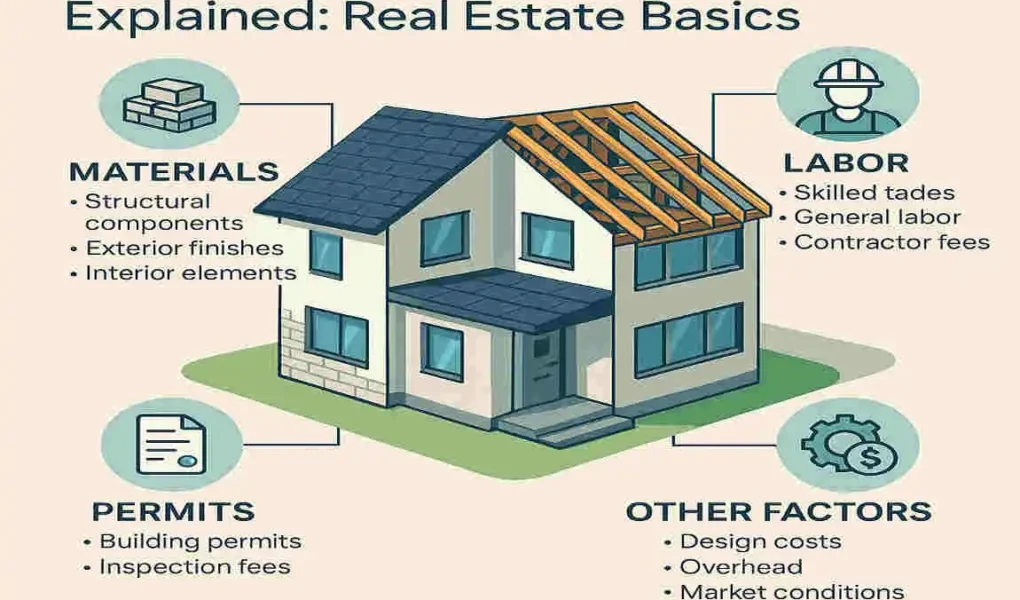When it comes to real estate, understanding the various concepts and terms used in property valuation is crucial for making informed decisions. One such concept is reproduction cost, which plays a significant role in determining the value of a real estate property.
What Is Reproduction Cost in Real Estate?

Reproduction cost, in the context of real estate, refers to the estimated expense of constructing an exact replica of an existing property using the same materials, design, and construction methods. It’s important to note that reproduction cost differs from replacement cost and market value:
- Reproduction Cost: The cost to construct an identical copy of the property.
- Replacement Cost: The cost to build a similar property with comparable utility using current materials and standards.
- Market Value: The price a property would sell for in the open market.
For example, let’s say you own a historic Victorian home. The reproduction cost would be the expense of building an identical house with the same vintage materials, intricate designs, and house construction techniques used in the original. This cost is essential for property owners, buyers, and investors to understand, as it impacts insurance coverage, financing, and restoration decisions.
Components of Reproduction Cost
To accurately determine the reproduction cost of a property, several key components must be considered:
- Materials: The cost of all materials used in the original construction, including lumber, brick, stone, and finishes.
- Labor: The expense of hiring skilled artisans and workers to replicate the original construction methods.
- Architectural Design and Craftsmanship: The cost of reproducing intricate designs, unique features, and custom elements.
- Permits and Fees: Expenses associated with obtaining necessary licenses and paying related fees.
- Additional Costs: Other expenses such as landscaping, utilities, and site preparation.
The quality and age of the original building also significantly impact the reproduction cost. Older properties require more expensive materials and specialized labor to accurately reproduce, while newer buildings are easier to replicate using readily available resources.
How Is Reproduction Cost Calculated?
Calculating reproduction cost involves a step-by-step process that takes into account current market rates for materials and labor, as well as building codes and regulations. Here’s a general overview of the process:
- Gather detailed information about the property, including blueprints, specifications, and photos.
- Research current market prices for materials and labor costs in the local area.
- Consult with architects, engineers, and contractors to estimate the cost of reproducing the property’s unique features and design elements.
- Factor in additional expenses such as permits, fees, and site preparation.
- Utilize specialized software or collaborate with professional appraisers to obtain an accurate reproduction cost estimate.
For instance, let’s consider a case study of a 1920s bungalow. To calculate its reproduction cost, an appraiser would research the current prices of materials like vintage hardwood flooring, period-specific fixtures, and handcrafted moldings. They would also account for the cost of skilled labor needed to recreate the home’s distinct architectural features. By combining these expenses with permit fees and other costs, they can provide a comprehensive reproduction cost estimate.
Reproduction Cost vs Replacement Cost: Key Differences

Although real estate reproduction cost and replacement cost are often used interchangeably, they have distinct differences:
- Reproduction Cost: Reproduces an exact replica of the property using the same materials and methods.
- Replacement Cost: Builds a similar property with comparable utility using modern materials and standards.
The choice between using reproduction or replacement cost depends on the purpose of the valuation. For insurance purposes, replacement cost is often used to determine the coverage required to rebuild a property in the event of a loss or damage. However, for historic preservation or specialized properties, the reproduction cost is more appropriate for capturing the value of unique features and craftsmanship.
Factor Reproduction Cost Replacement Cost
Materials Original, vintage Modern equivalents
Labor , Specialized craftsmen, Current contractors
Design Exact replica Comparable utility
Insurance : Higher premiums , Lower premiums
Preservation is preferred for historic properties. Less applicable
Understanding the differences between replacement cost and reproduction cost is crucial for making informed decisions in real estate transactions and insurance policies.
Why Understanding Reproduction Cost Matters in Real Estate
Reproduction cost plays a vital role in various aspects of real estate:
- Insurance Coverage and Premiums: Accurately determining reproduction cost ensures that a property is adequately insured and that premiums are reasonably calculated.
- Property Appraisal and Financing: Reproduction cost is a key factor in comprehensive property valuation reports, which are essential for securing financing and making investment decisions.
- Restoration and Preservation: For historic or architecturally significant properties, reproduction cost helps estimate the expenses involved in preserving or restoring unique features and design elements.
- Real Estate Investment Analysis: Investors use reproduction cost to assess the potential risks and returns of a property, considering factors such as market demand, construction costs, and long-term value.
By understanding the cost of reproduction, property owners, buyers, and investors can make more informed decisions and negotiate fair prices in real estate transactions.
Factors That Influence House Reproduction Cost
Several factors can significantly impact the reproduction cost of a property:
- Geographic Location and Local Market Conditions: Construction costs and labor rates vary widely depending on the region and local economy.
- Age and Condition of the Original Property: Older properties may require more expensive materials and specialized labor to reproduce accurately.
- Architectural Complexity and Materials Used: Intricate designs, unique features, and high-end materials can significantly increase the cost of reproduction.
- Economic Factors: Inflation, labor market conditions, and supply chain issues can affect the cost of materials and labor over time.
- Technological Advancements and Modern Standards: Reproducing older properties may require additional expenses to meet current building codes and safety standards.
Considering these factors is essential for obtaining accurate reproduction cost estimates and making informed real estate decisions.
How to Use Reproduction Cost in Real Estate Transactions
Reproduction cost is a valuable tool in various real estate transactions:
- Property Valuation Reports: Appraisers use the reproduction cost method as one of several approaches to determine a property’s overall value, alongside sales comparison and income capitalization methods.
- Negotiating Buying or Selling Price: Understanding a property’s reproduction cost can help buyers and sellers negotiate fair prices based on the unique features and quality of the building.
- Renovation and Rebuilding Decisions: Reproduction cost estimates can help property owners make informed decisions about renovating, restoring, or rebuilding their properties.
- Working with Professionals: Collaborating with experienced appraisers, contractors, and insurance adjusters who understand reproduction cost ensures accurate valuations and smoother transactions.
By effectively utilizing reproduction costs in real estate transactions, buyers, sellers, and investors can make more confident and informed decisions.
Common Misconceptions About Reproduction Cost
Despite its importance, reproduction cost is often misunderstood or misused in real estate:
- Confusing Reproduction Cost with Replacement Cost or Market Value: It’s essential to understand the distinct differences between these valuation concepts to avoid misinterpretation.
- Overestimating or Underestimating Costs: Incomplete data, outdated information, or a lack of expertise can lead to inaccurate reproduction cost estimates.
- Misuse in Insurance Claims and Property Tax Assessments: Misapplying reproduction cost in these contexts can result in over- or under-insuring properties or paying inaccurate property taxes.
To avoid these misconceptions, it’s crucial to work with experienced professionals and consult reliable sources for accurate reproduction cost data.




